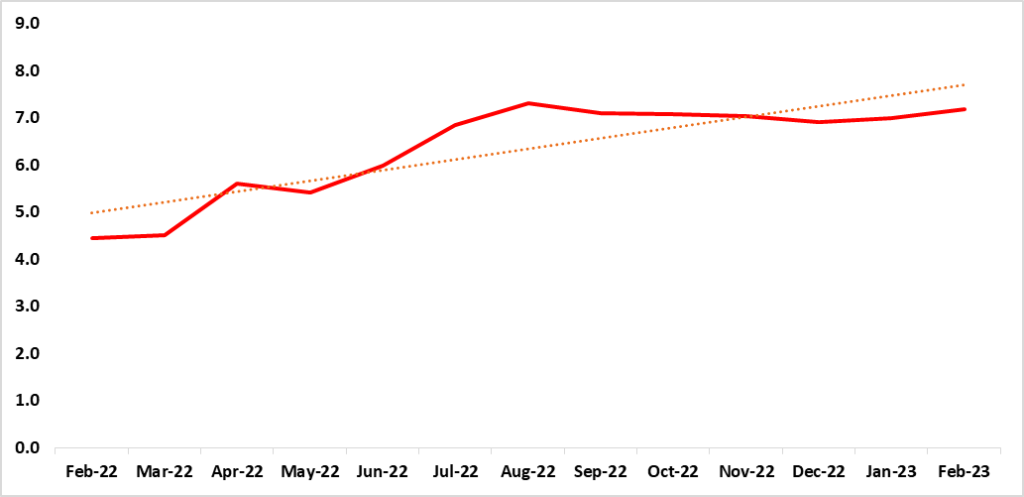Executive summary
- The annual inflation rate for February 2023 increased to 7.2%, up from 4.5% recorded for the same period last year. (Figure 1)
- The two major drivers of an increase in the annual inflation rate were the food & non-alcoholic beverages, and miscellaneous goods and services categories. (Figure 2)
- On a monthly basis, Namibia recorded an inflation rate of 0.4% in February 2023 compared to 1.1% recorded in January 2023
Analysis
- Food and non-alcoholic beverages which accounts for 16.5% of the NCPI basket annual inflation increased to 14% during the month of February 2023 compared to 5.4% recorded during February 2022. The increase in the food and non-alcoholic beverages component was mainly driven by an increase in the price levels of fruit, bread, and cereal accounting for 26.8% and 22% respectively
- The rise in food prices was attributed to the hike in the prices of various products, such as maize meal, flour, pasta, among others, by Namib Mills on November 14, 2022. For instance, a 10kg bag of maize meal that previously cost around N$110 now costs approximately N$150.
- In February 2023, the annual inflation rate for the miscellaneous goods and services category, comprising 5.4% of the consumer basket, rose by 7.0%, which is considerably higher than the 0.9% recorded in February 2022. The surge in miscellaneous goods and services can be attributed to the heightened demand for new policies in the general liability and riot/strike classes of insurance, which led to the implementation of new policies.
Figure 1: Annual Inflation Rate (February 2022 – February 2023)

Figure 2: Sub-Categorical analysis (%) change Year on Year and Month on Month

Outlook
- The persistent upsurge in food prices, particularly for essential commodities such as Giffen goods that have no close substitutes is a significant threat to food security and household cost of living. This is because inflation has continuously eroded the purchasing power of consumers
- We anticipate inflation to remain elevated in the short term as a result of supply-side factors that continue to weigh on the prices of goods.